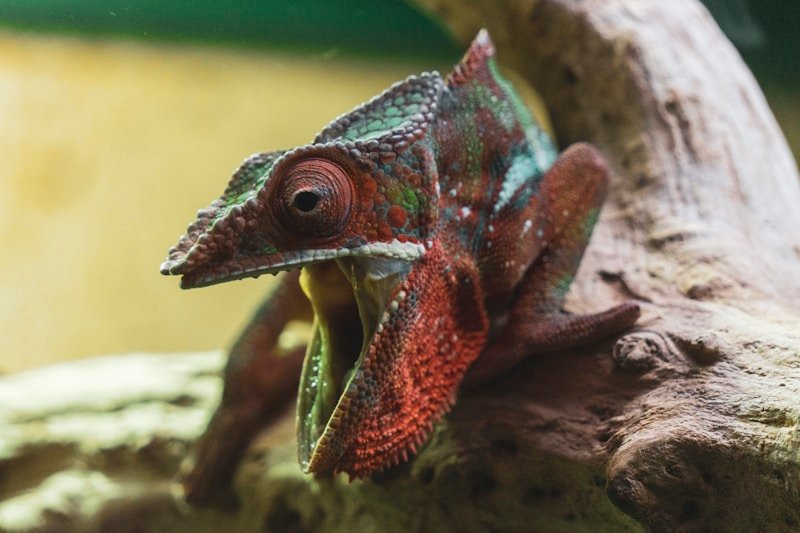Reptiles are a fascinating group of animals that have roamed the Earth for millions of years. From snakes and lizards to turtles and crocodiles, reptiles share unique characteristics that set them apart from other animals, especially in how they grow and develop. Understanding the life cycle of reptiles helps us appreciate the adaptability and diversity of these cold-blooded creatures. Like all living things, reptiles go through distinct stages of life — from eggs to adults — each with specific traits and survival strategies.
Egg Stage: The Beginning of Life
The journey of a reptile’s life begins in the egg. Most reptiles lay eggs, although some, like certain species of snakes and lizards, give birth to live young. Reptile eggs are typically laid in warm, sheltered environments such as underground nests, rotting vegetation, or sandy soil. Unlike bird eggs, reptile eggs have leathery shells that are more flexible, allowing them to retain moisture while also protecting the developing embryo.
The temperature of the environment during incubation plays a critical role in development. In some species, such as alligators and some turtles, the temperature can even determine the sex of the offspring — a phenomenon known as temperature-dependent sex determinations. During the incubation period, which can last from several weeks to a few months, the embryo inside the egg slowly develops into a hatchling.
Hatchlings: Vulnerable and Independent
Once fully developed, the baby reptile breaks out of its egg using a special egg tooth — a temporary structure that helps it crack the shell. This marks the beginning of the hatchling stage. Unlike mammals and birds, most reptile parents do not care for their young. Hatchlings are generally independent from birth, relying on instinct to find food and avoid predators.
At this stage, survival is challenging. Hatchlings are small, vulnerable, and must quickly learn to adapt to their environment. Their coloration often helps with camouflage, offering some protection from predators. Food sources vary by species, but common prey for hatchlings includes insects, small fish, or plant material, depending on whether they are carnivorous, herbivorous, or omnivorous.
Despite their vulnerability, hatchlings grow rapidly if food is abundant and environmental conditions are favorable. This growth is crucial for escaping the attention of predators and eventually reaching adulthood.
Juvenile Stage: Growth and Development
As hatchlings grow, they enter the juvenile stage. During this period, reptiles continue to develop the physical traits and behaviors characteristic of their species. For instance, juvenile snakes begin to shed their skin more frequently as they grow, while young turtles start to develop harder shells for added protection.
This stage can last from several months to several years, depending on the species. Growth rates are influenced by food availability, climate, and habitat. Unlike mammals, reptiles do not have a fixed number of growth spurts. Instead, they often grow continuously, though the rate slows down as they mature.
During this time, juveniles become more proficient hunters or foragers. They also begin establishing territories and learning survival skills that will help them as adults. In some species, juveniles may resemble adults, while in others, their appearance may change significantly as they mature.
Adulthood: Reproduction and Longevity
The final stage in a reptile’s life cycle is adulthood. Once a reptile reaches sexual maturity, its main biological drive becomes reproduction. Adult reptiles engage in various mating behaviors, which can include complex courtship rituals, vocalizations, and physical displays to attract mates.
Reproductive strategies vary widely. Some reptiles, like sea turtles, travel long distances to return to their birth beaches to lay eggs. Others, like certain species of lizards, produce multiple clutches of eggs in a single year. Fertilization in reptiles is internal, and many species have evolved specialized structures to aid in reproduction.
Adult reptiles also play important roles in their ecosystems. As predators, they help control populations of insects, rodents, and other prey. As prey themselves, they are a vital part of the food chain. Depending on the species, some reptiles can live for decades. Turtles, for example, are known for their longevity, with some individuals living over 100 years.
While the life cycle of reptiles follows a general pattern, it’s shaped by the incredible diversity within this group. From desert lizards to rainforest snakes, each species has adapted to its environment in unique ways.
Reptiles are more than just ancient creatures with scaly skin — they are complex animals with fascinating life cycles. From the moment they emerge from their eggs to the time they reproduce as adults, each stage of life presents unique challenges and adaptations. Understanding the life cycle of reptiles not only highlights their biological wonders but also emphasizes the importance of conserving these often misunderstood animals and the ecosystems they inhabit.

